The three-day digital event had a clear message: practical dressing and elevated tailoring. Here are the highlights, key trends, and emerging talents to follow.
Oct 29, 2020
Launched in 1997, South African Fashion Week is one of the biggest fashion events on the African continent and showcases some of the most established as well as some of the most promising emerging design talents from South Africa. With numerous designer development initiatives, South African Fashion Week has become known for discovering and nurturing talent, not only when it comes to the design skills needed to succeed in the industry, but also teaching the business skills necessary for the growth of young labels. The bi-annual event usually takes place in April and October in Johannesburg but after canceling its April 2020 event due to Covid-19 lockdown, South African Fashion Week came back this season to stage its trans-seasonal themed showcase, aimed at a shift towards increased sustainability and slow fashion. With an all-digital schedule, the shows this season were presented in short, pre-recorded videos filmed in various open and empty venues including an underground parking lot, a shopping mall, and building rooftops. Recycling, childhood memories, and experimental cues were on designers’ minds this season.
Workwear-inspired silhouettes and cuts emerged from the virtual catwalks. The clothes were unfussy and embraced a minimalist spirit with a newfound freshness. This isn’t completely new for South African designers and the South African fashion system as a whole, which errs on the side of functionality. Designers largely stuck to what they know, focusing on reality and the now, as opposed to espousing fantasy and escapism. With possibly fewer social gatherings to attend, accessories were stripped to the bare minimum, or, in most cases, were altogether unpresent.
Key Trends
Layering
Layering came in various forms this season. Firstly, matching sets were layered with light knits and silky fabrics that protruded from necklines and scarves that tied around the waist for sophisticated flair at Lukhanyo Mdingi.
Comfort-driven tailoring
Labels like Naked Ape and Ephymol revived and embraced a sartorial cool in which tailoring is paired with flat sandals for both men and women, a styling choice we also spotted at Taakk’s showcase at Japan Fashion Week, Michael Kors’ solo presentation, and Stella McCartney's SS’21 offering.
Geometric Prints
Of course there were prints as well. This season they were surprisingly subdued in color and mood, in a pure reaction and reflection of the Covid era and the impact it had on the industry from designers' morale to restricted access to fabrics.
Pleats
Pleats were the biggest sartorial addition of the season. They surfaced on the hems of a suit at Lucent, as back details on a jacket as well as the front of a gender-blurring, unstructured waistcoat by Scouting Menswear finalist Thabo Kopele. Elsewhere, Mmuso Maxwell worked the pleats onto the side of skirts and dresses for a modern look.
Asymmetric hems
Asymmetric hems added movement and interesting alternatives to regular silhouettes. Designers such as Judith Atelier and Cindy Mfabe adopted the trend on both dresses and skirts resulting in confident looks with a playful feel.
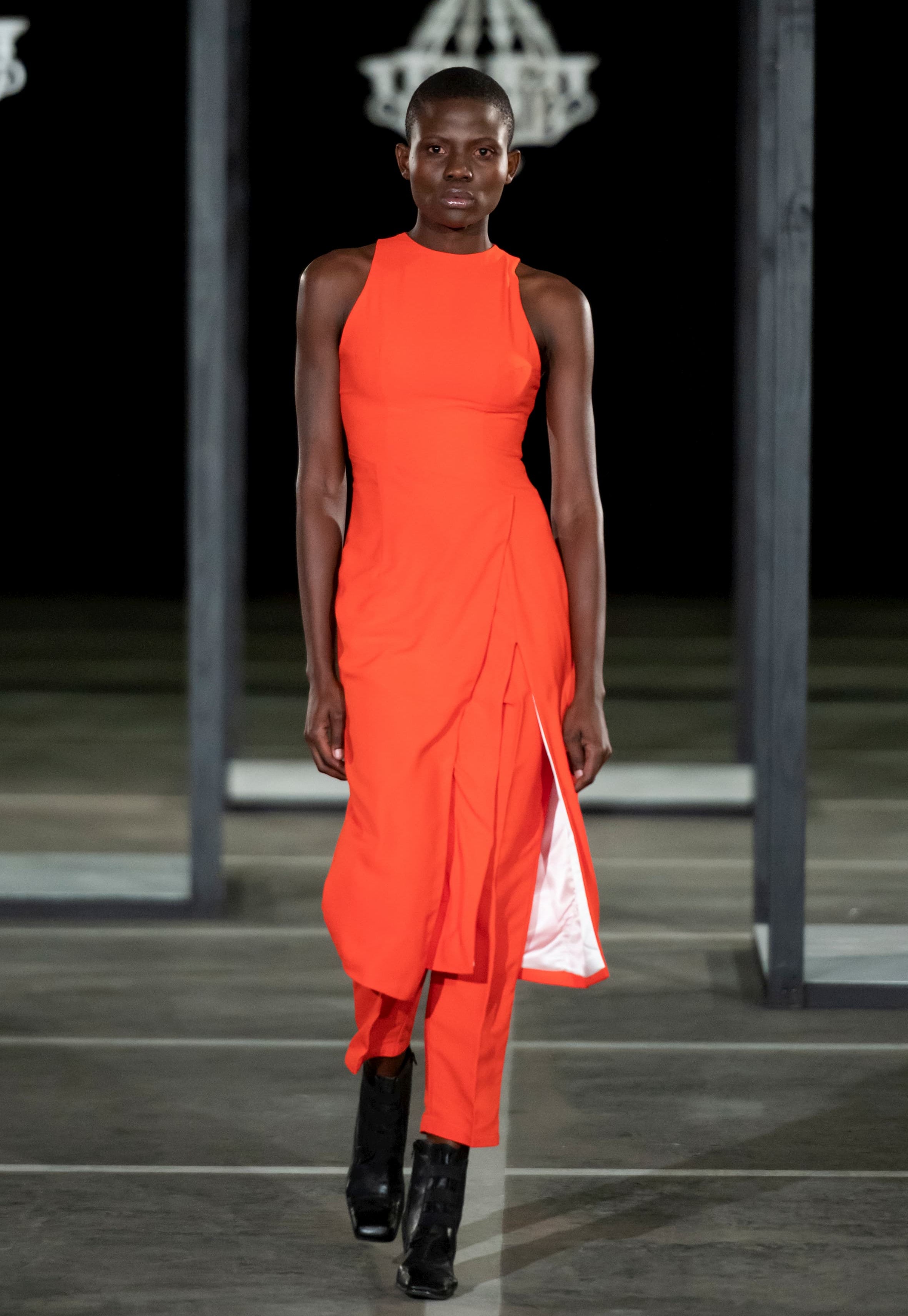
Photo: Cindy Mfabe SS‘21 by Eunice Driver Photography

Photo: Ephymol SS‘21 by Eunice Driver Photography

Photo: Lukhayo Mdingi SS‘21 by Eunice Driver Photography

Photo: Cindy Mfabe SS‘21 by Eunice Driver Photography
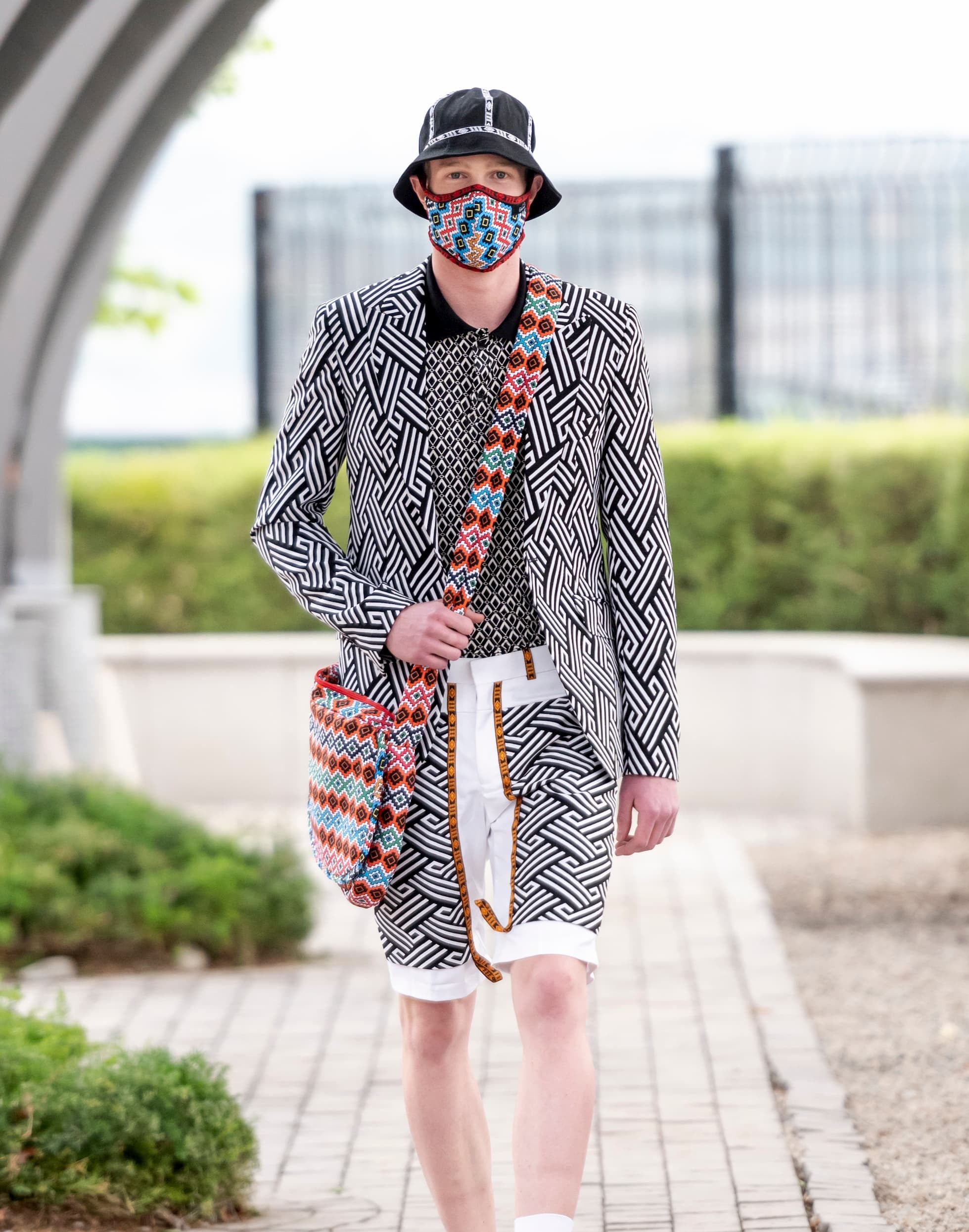
Photo: Ephymol SS‘21 by Eunice Driver Photography
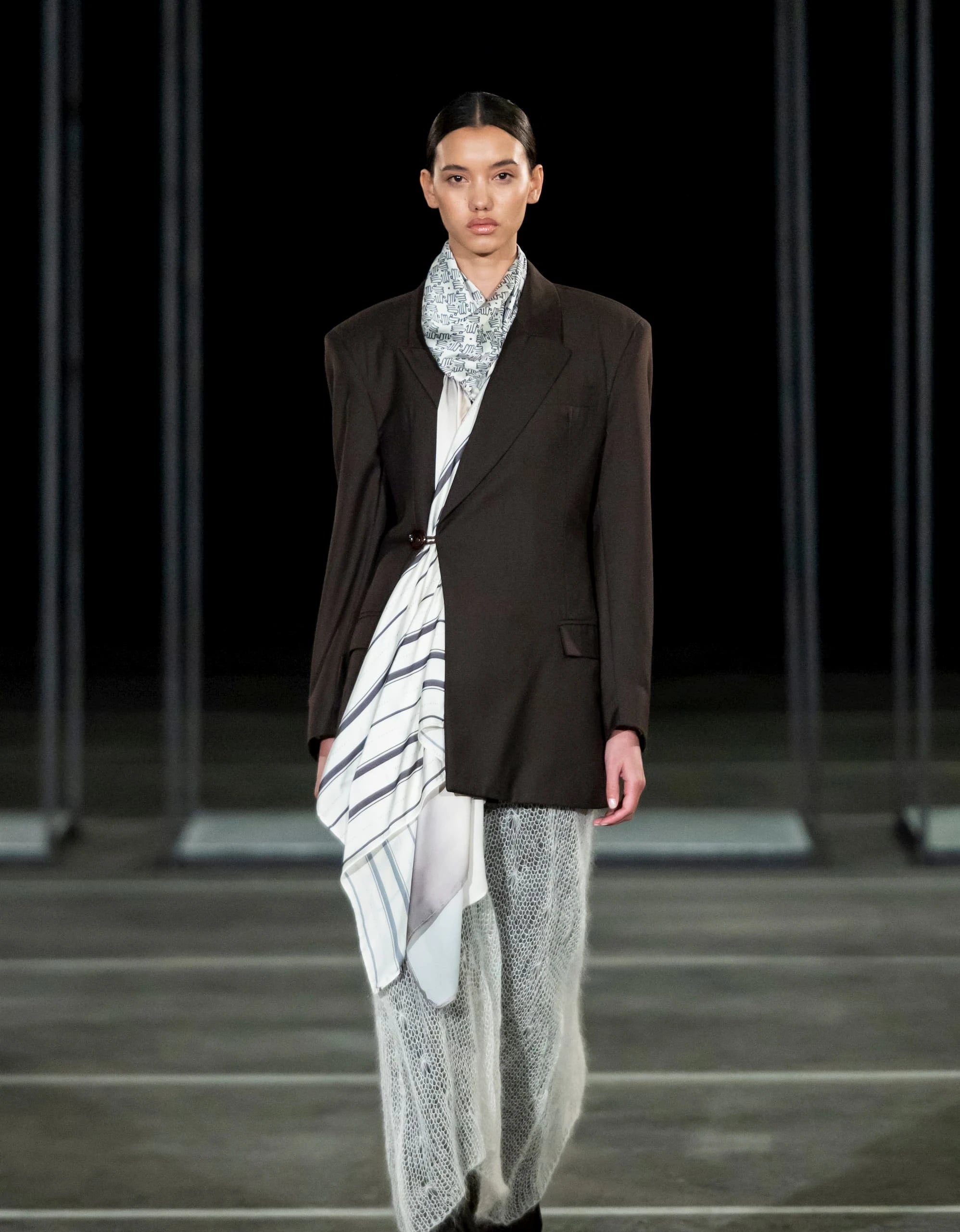
Photo: Lukhayo Mdingi SS‘21 by Eunice Driver Photography
Standout Looks
Womenswear label Mantsho which is the first African label to ever collaborate with high street retailer H&M presented delightful recurrent black and white graphic prints of flowers. The designer paired leggings with a pink trench in one instance and a kaftan-style dress in another in elegantly polished looks.
Another set of standout garments were Lukhanyo Mdingi’s refined coats, suits and gilets. Not only are his clothes palpably comfortable, but they also have the potential to become cherished essentials due to their timeless quality and exquisite fabrics.
Then there was Mmuso Maxwell’s clever construction of wrapping techniques on suit jackets that featured panels that criss-crossed and loosely fastened on the body and a gold sleeveless wool dress worn over matching wool pants. All these significant details from Mmuso Maxwell resulted in a self-assured style and voice.

Photo: Mantsho SS‘21 by Eunice Driver Photography
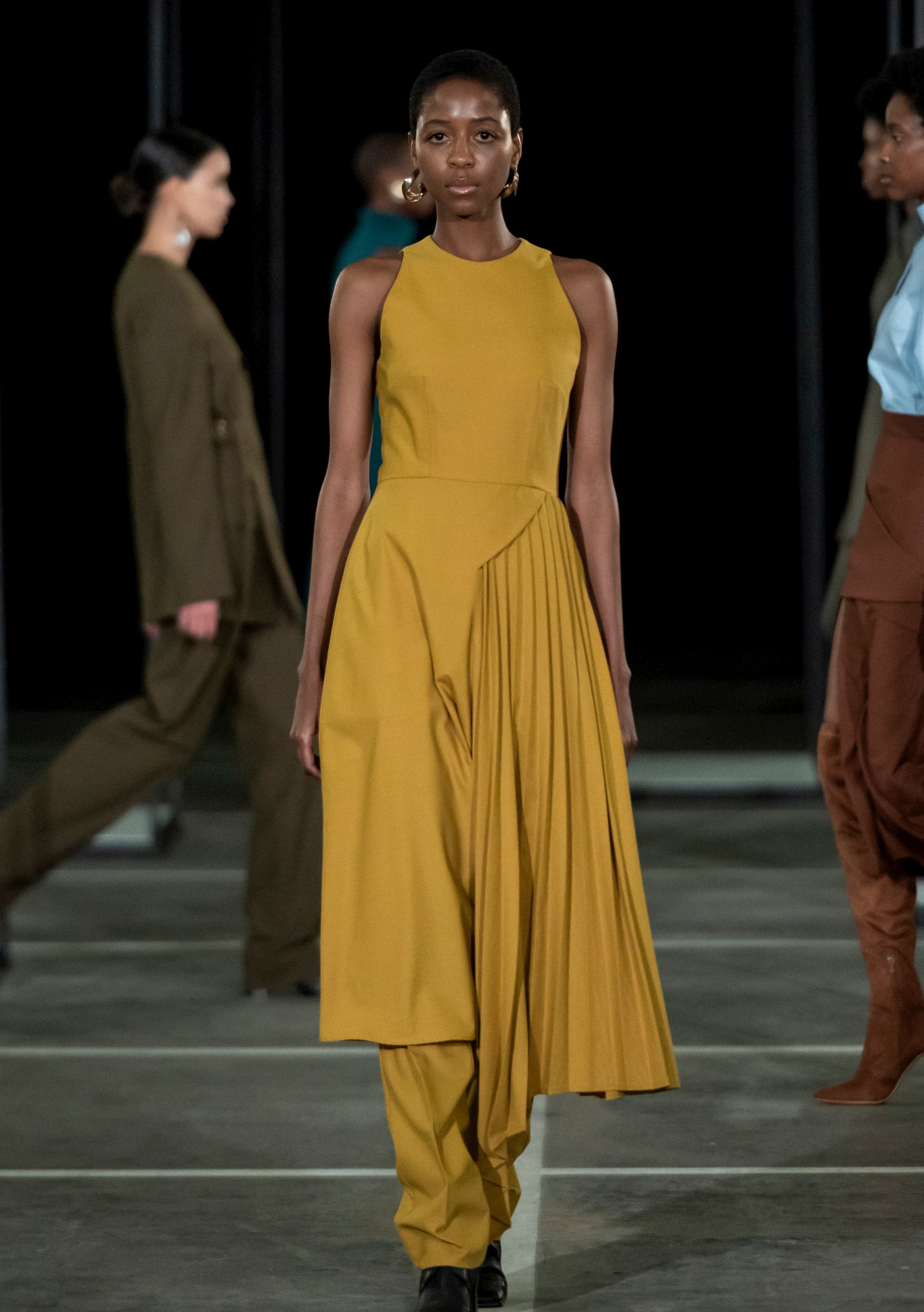
Photo: Mmuso Maxwell SS‘21 by Eunice Driver Photography

Photo: Lukhayo Mdingi SS‘21 by Eunice Driver Photography

Photo: Mantsho SS‘21 by Eunice Driver Photography
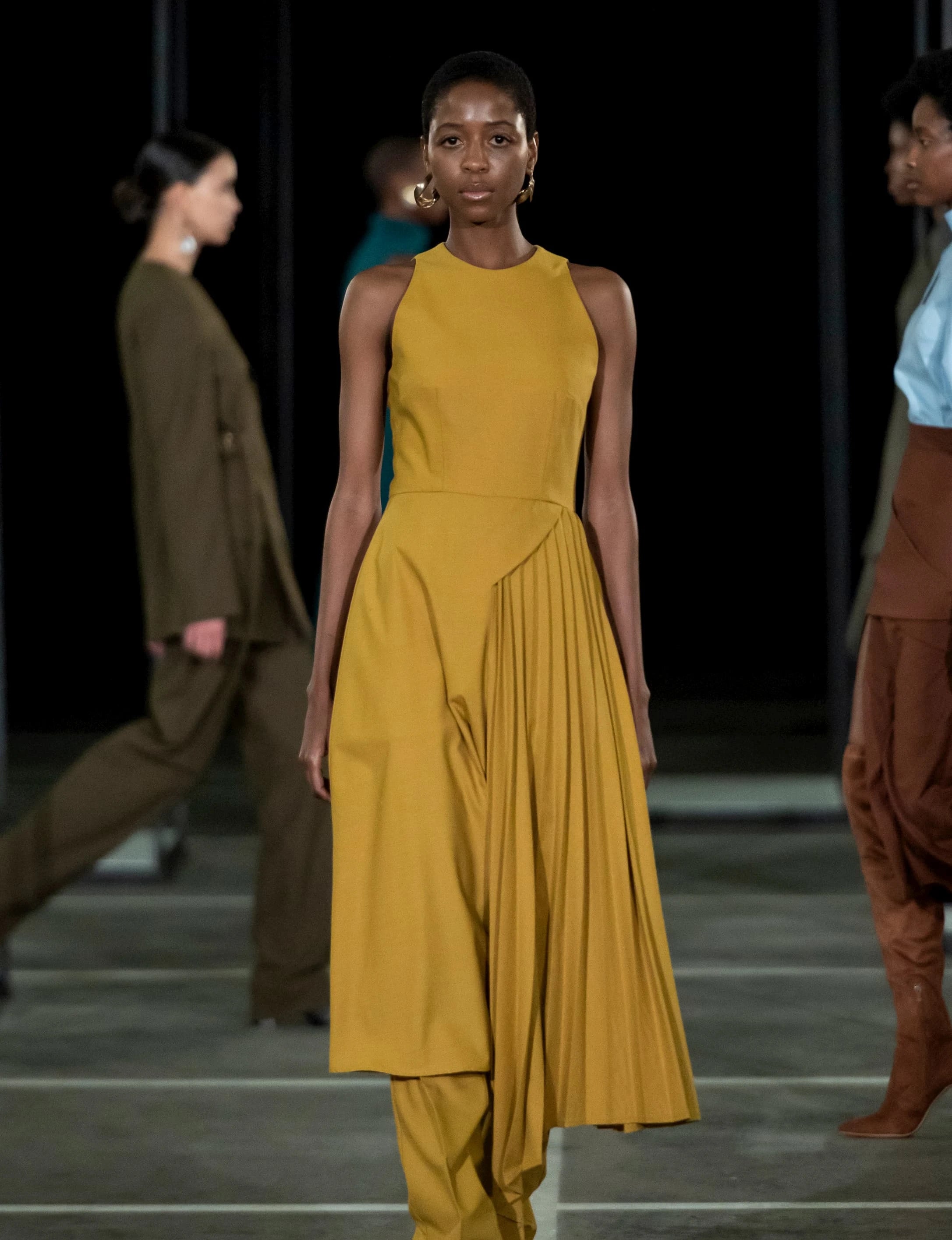
Photo: Mmuso Maxwell SS‘21 by Eunice Driver Photography
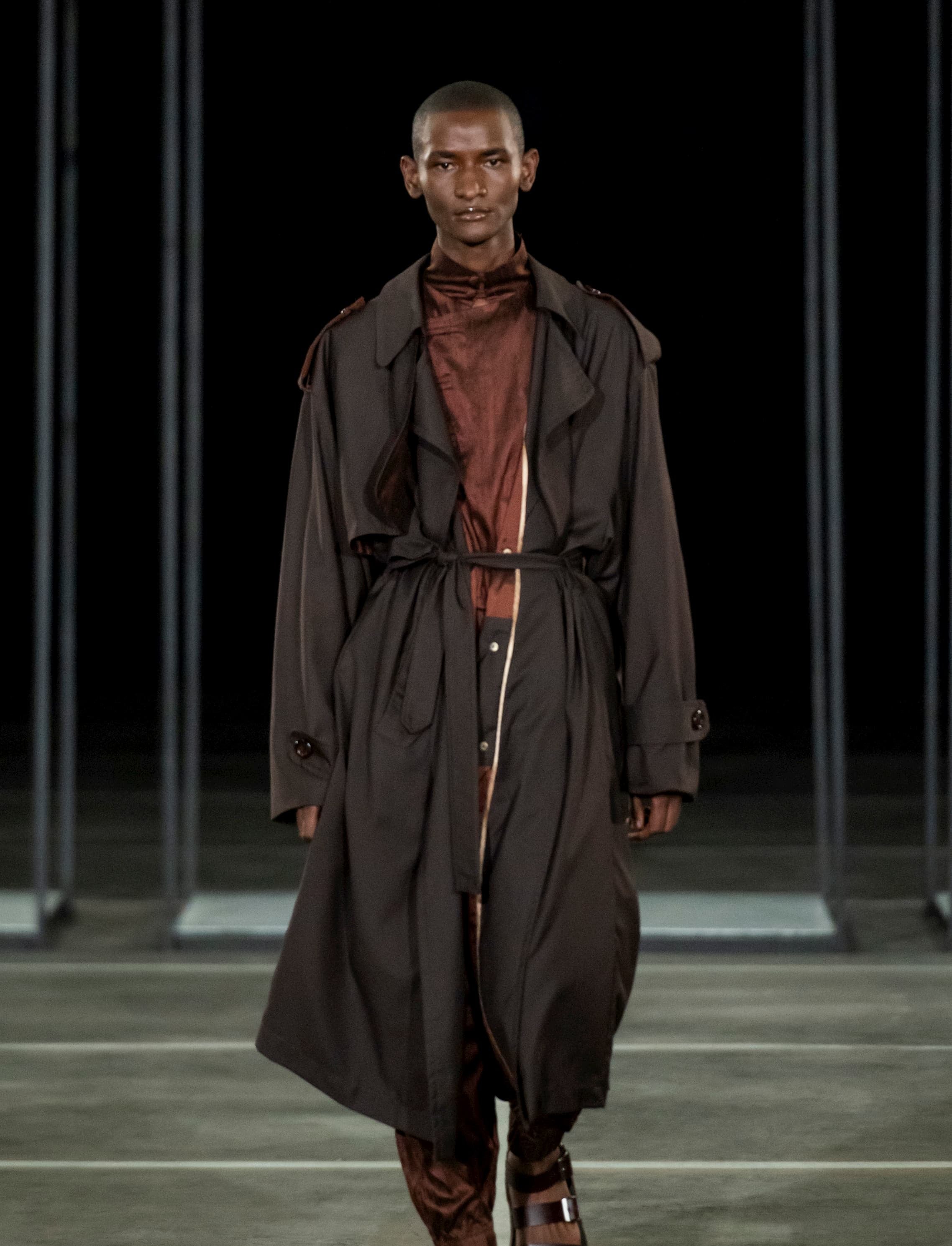
Photo: Lukhayo Mdingi SS‘21 by Eunice Driver Photography
On Our Radar
The South African Mohair Cluster, an organization that promotes the local mohair industry (South Africa is one of the world's largest producers of mohair) in partnership with SA Fashion Week developed the Diamond Fiber Collections initiative which provided mentorship, raw materials, and marketing support to three emerging labels: Lukhanyo Mdingi, Mmuso Maxwell, and Judith Atelier. Each of this new guard of designers presents a unique vision, global appeal and refuses to be put into a box.
Mdingi, who is set to showcase at Pitti Uomo 99 next year as part of The Ethical Fashion Initiative Accelerator program that offers business and production support to labels producing on the continent, is known for his luxurious essentials and small considered collections. He presented trench coats, suits, exaggerated cozy scarfs, and felted kid mohair and pure merino wool blend gilets in rich chocolate and syrup shades of brown. Some of the men's looks made an appearance in womenswear blurring the line between these genders. His suits and separates reflected and asserted the designer’s attitude towards purposeful clothing built on the values of mindfulness and consideration of both the makers and wearers of the clothes.
Meanwhile designer Judith Smit’s label, Judith Atelier, leaned on silhouettes whose femininity was echoed by red accents of knitted Mohair dresses, tulle skirts, and ripped knits that exposed slivers of skin. Several looks were styled off the shoulder, suggesting both instinctive comfort dressing and a punch of youthfulness that we don’t usually experience in Smit’s designs. Smit is only recently gaining notoriety beyond the borders of South Africa, but the iconoclastic designer refuses to be defined by “African prints” and is poised to add a unique voice to the narrative of African fashion.
Mmuso Potsane and Maxwell Boko, the downtown Johannesburg-based duo behind the label Mmuso Maxwell, were inspired by the working woman living in a modern environment. The collection challenged the idea of a woman's space in society with refreshed tailoring of loose-fitting suits and dresses adorned with side panels and pleats. This season the pair is designing for the working power woman. “Culturally influenced women living in modern spaces; women who despite our patriarchal society hold positions of power in politics and the economy”, is how the designers described this season’s muses to the SA Fashion Week organization. So far the brand's leading women has included Beyoncé who wore the label at the Global Citizen Concert in 2018 and, more recently, featured it in her 2020 visual album, Black Is King.

Photo: Lukhayo Mdingi SS‘21 by Eunice Driver Photography

Photo: Judith Atelier SS‘21 by Eunice Driver Photography

Photo: Mmuso Maxwell SS‘21 by Eunice Driver Photography

Photo: Lukhayo Mdingi SS‘21 by Eunice Driver Photography

Photo: Judith Atelier SS‘21 by Eunice Driver Photography
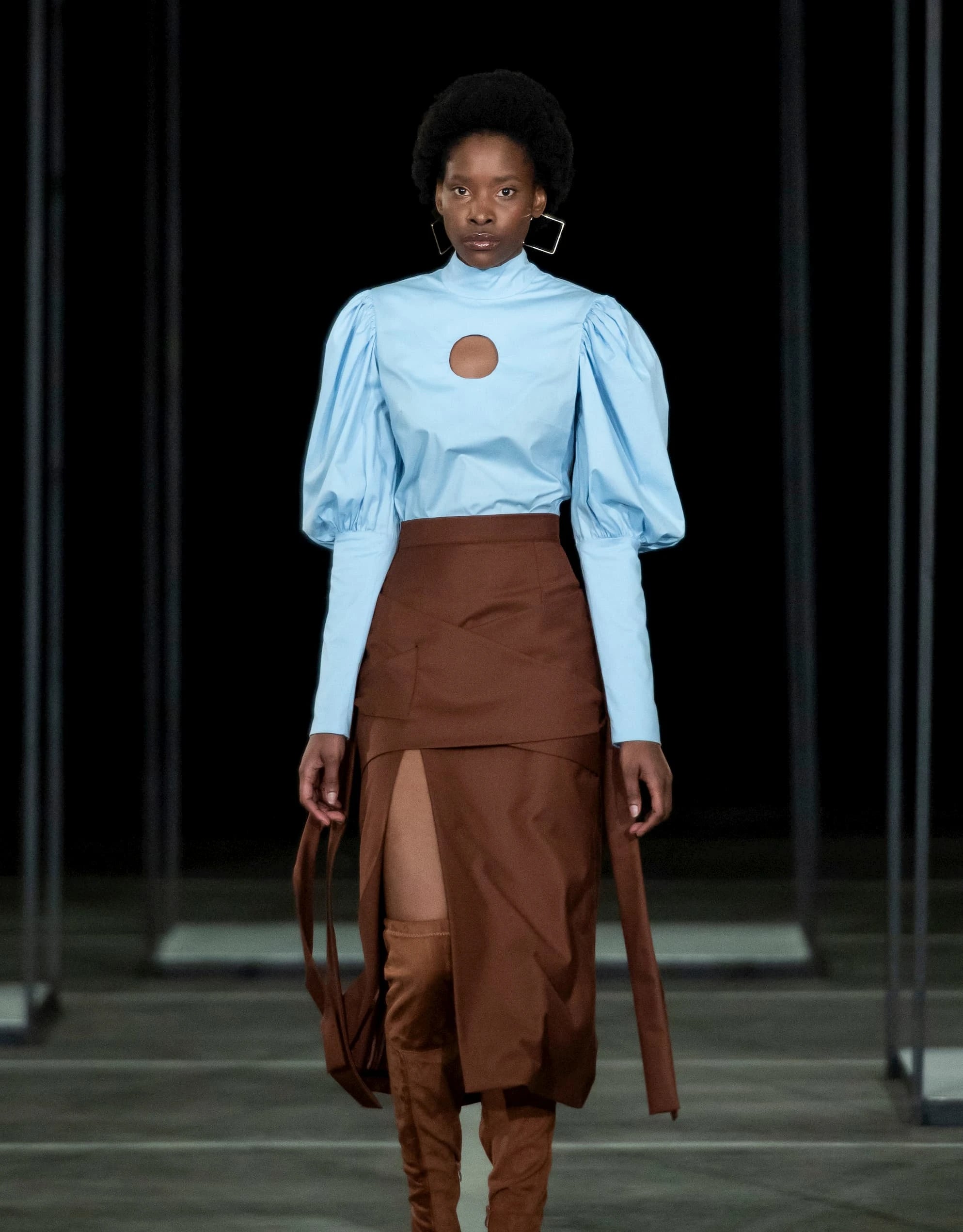
Photo: Mmuso Maxwell SS‘21 by Eunice Driver Photography
New Kids On The Block
Every year since 2012, the SA Fashion Week’s annual Scouting Menswear competition has provided design and business mentoring to upcoming talents. This year's five finalists Thabo Kopele, Boyde, Xavier Sadan, Gugu, and Maklele presented exciting collections driven by sustainability and an easy-going approach to dressing. Kopele’s laid-back designs are conceived with today’s dynamic youth in mind. His workwear jacket, for instance, is generously cut and loose fitting, and a pleated detail on its back is revealed as the model turns. Kopele hopes to tell stories that will last for generations, much like his timeless aesthetic.
The theme of streamlined design continued at Boyde by Samkelo Boyde Xaba, using radiant reds and blues to emphasize boxy-cut jackets worn with cropped pants and Converse Chuck Taylors. As Xaba puts it: “I came up with something versatile like this suit you can wear in a business meeting. [You could cycle] in it [and still be comfortable] because its construction is functional, it doesn't have shoulder pads and the fabrics are light,” he tells Industrie Africa. The designer is referring to the first look of the collection: a cropped loose-fitting suit made from recycled fabrics. His entire collection is 100% recycled.
Another finalist, Michael Reid of Xavier Sadan drew his collection’s inspiration from childhood memories: “This collection is called the Circle Of Life. It’s about life and death and life after death,” he tells Industrie Africa. Each look is a direct reference to the designer's past. One design is inspired by dunes in Mitchells Plain, Cape Town where Reid grew up and another features two figures shooting at each other, another childhood reality and lived experience from the rough neighborhood of Kensington in Cape Town. Reid went on to apply this theme to the fabrics of the season, using plastic offcuts to make buttons and mixing upcycled and surplus fabrics as further metaphor of the concept of old things being imbued with new life in practical and lasting ways.
As we look to the future, there’s no doubt that Covid-19 has pushed local designers into a more digital space and mindset that many had not previously fully embraced, perhaps because of a lack of resources, conservative attitudes or both. From a fully digital showcase with no guests in sight, to a season classified as trans-seasonal, and adaptable apparel for both work and casual wear, reality took centre stage at South African Fashion Week.

Photo: Boyde SS‘21 by Eunice Driver Photography

Photo: Gugu SS‘21. Via @fashionhandbooksa

Photo: Xavier Sadan SS‘21. Via @fashionhandbooksa

Photo: Boyde SS‘21 by Eunice Driver Photography

Photo: Gugu SS‘21. Via @fashionhandbooksa

Photo: Xavier Sadan SS‘21. Via @fashionhandbooksa
the edit
THE NEW ROMANCE: THE BEST PIECES TO LOVE YOURSELF IN THIS VALENTINE’S DAY_
Feb 13, 2023
read more